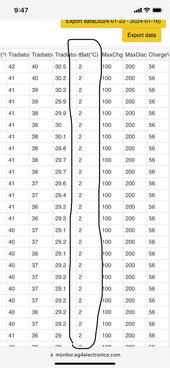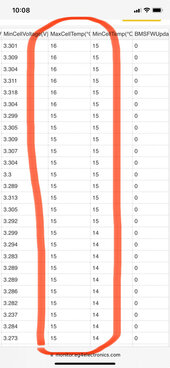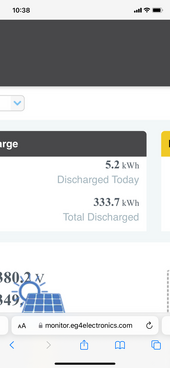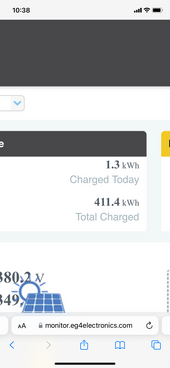SignatureSolarJames
Try Solar, the Grid will always take you back
Alright guys!
Here is some data about running a whole house off the grid/in self consume mode for several months on the 18k AIO
Battery charge+discharge efficiency is 89.4% for energy stored and used after sunset
daytime efficiency is 97.5%, power coming directly from solar panels to AC output

if you click the "battery discharge section it shows "battery charge" aspect.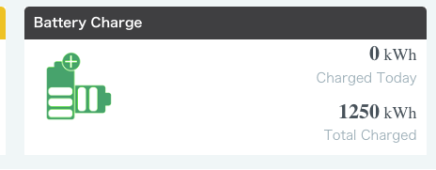
I added the 12kwh on the bank to the battery discharge number for overall totals
1118kWh discharged vs 1250kWh charged
1118/1250kWh = 89.44%
The customer shows 1538kWh of self load 1118kwh of this was at night (demographics is a 2 worker no kids household so the daytime load skews lower than retiree or family day usage ratio) so daytime = 420kWH or only 27% of load
their power co pays $.078/kwh so they exported 2158kWH as well at 97% efficiency, but I will avoid that part as many do not have any serious export value and would not have put in extra solar
this is probably the lowest efficiency possible due to the daytime ratio
89% x 73% + 97% x 27% = 91.1% total system efficiency
I would put this in the inverter efficiency section of PVWATTS when you do your design calcs if you are not a heavy daytime user
MORE SYSTEM ANALYSIS COMING
Here is some data about running a whole house off the grid/in self consume mode for several months on the 18k AIO
Battery charge+discharge efficiency is 89.4% for energy stored and used after sunset
daytime efficiency is 97.5%, power coming directly from solar panels to AC output

if you click the "battery discharge section it shows "battery charge" aspect.

I added the 12kwh on the bank to the battery discharge number for overall totals
1118kWh discharged vs 1250kWh charged
1118/1250kWh = 89.44%
The customer shows 1538kWh of self load 1118kwh of this was at night (demographics is a 2 worker no kids household so the daytime load skews lower than retiree or family day usage ratio) so daytime = 420kWH or only 27% of load
their power co pays $.078/kwh so they exported 2158kWH as well at 97% efficiency, but I will avoid that part as many do not have any serious export value and would not have put in extra solar
this is probably the lowest efficiency possible due to the daytime ratio
89% x 73% + 97% x 27% = 91.1% total system efficiency
I would put this in the inverter efficiency section of PVWATTS when you do your design calcs if you are not a heavy daytime user
MORE SYSTEM ANALYSIS COMING




